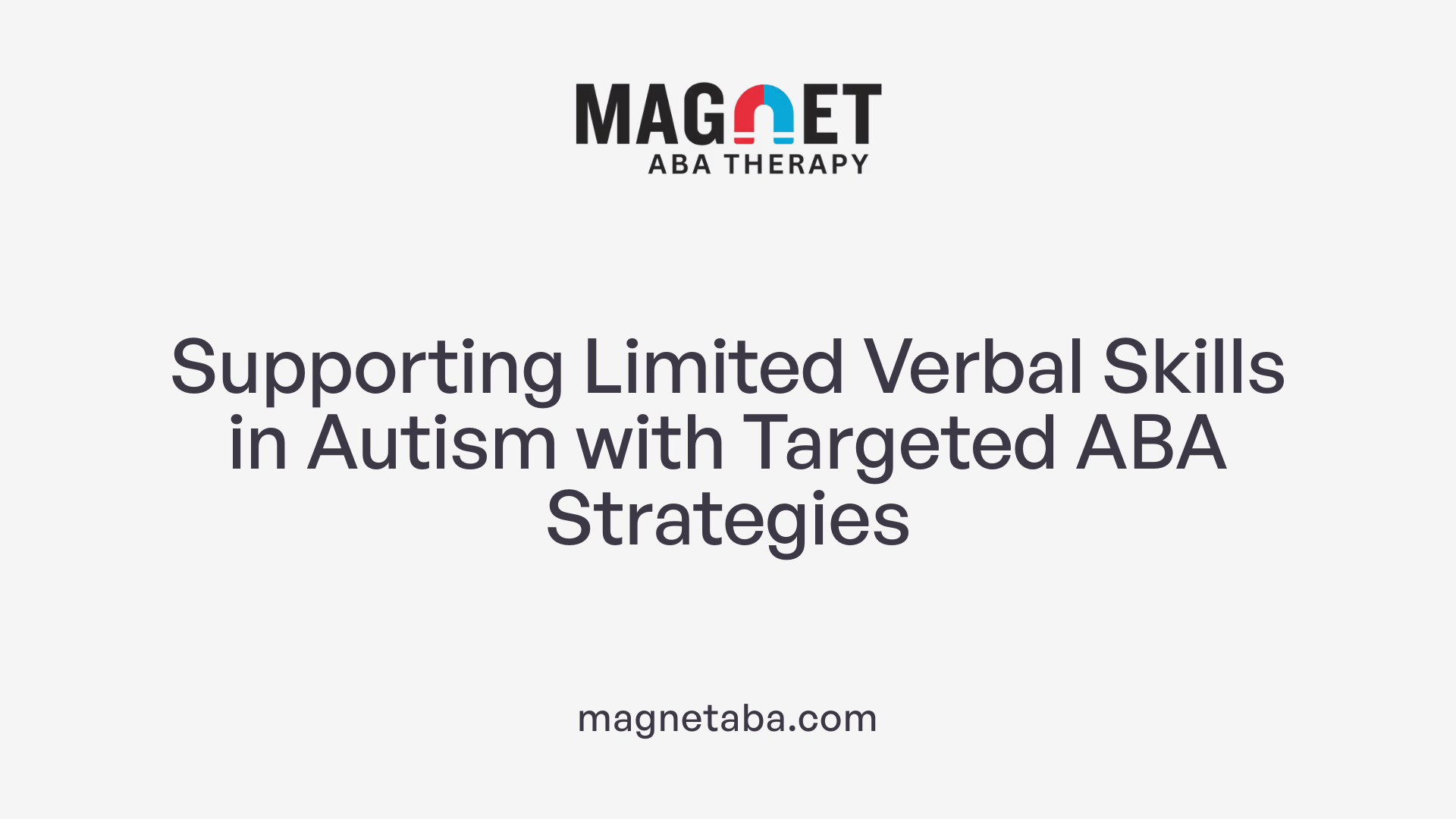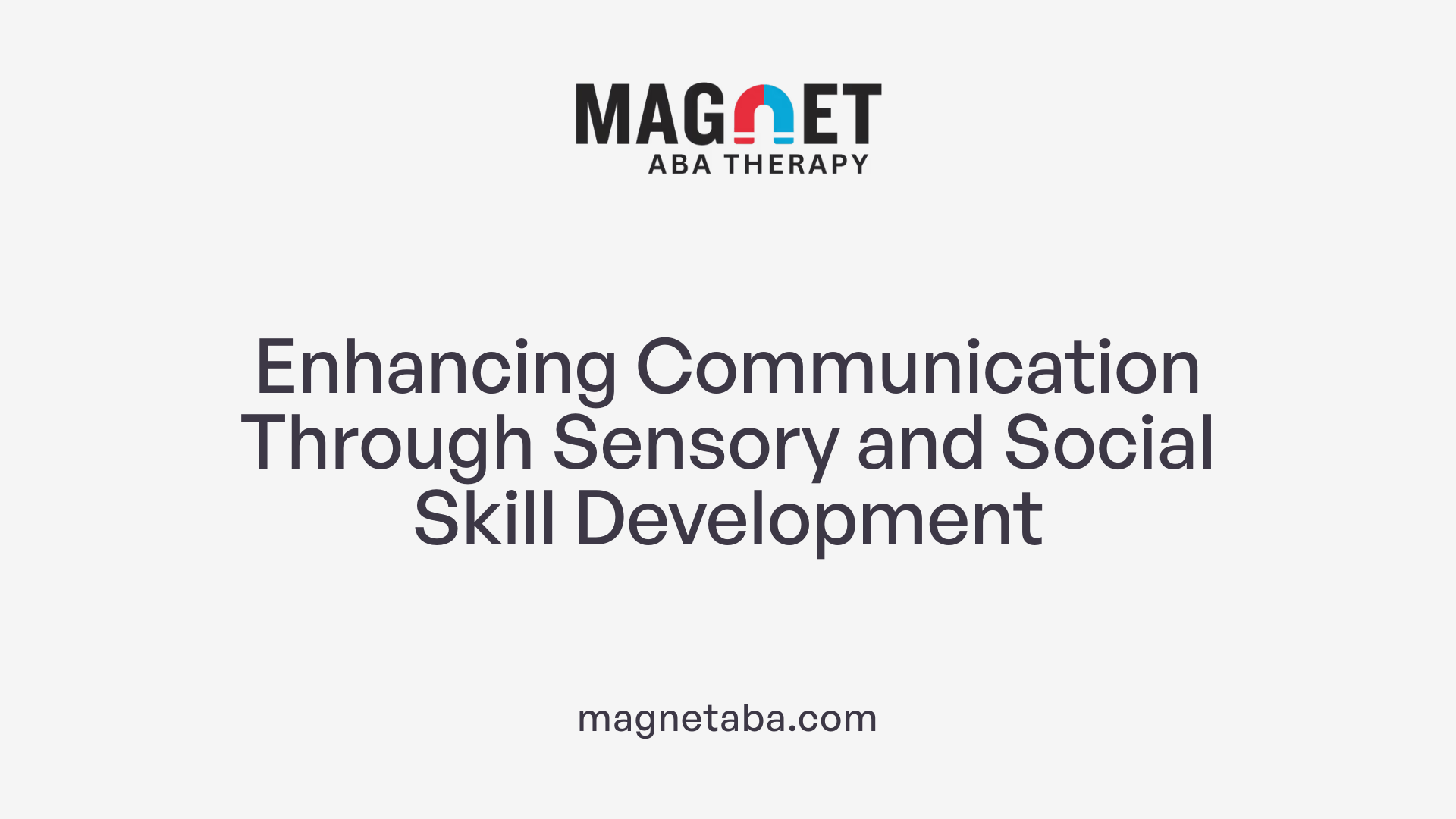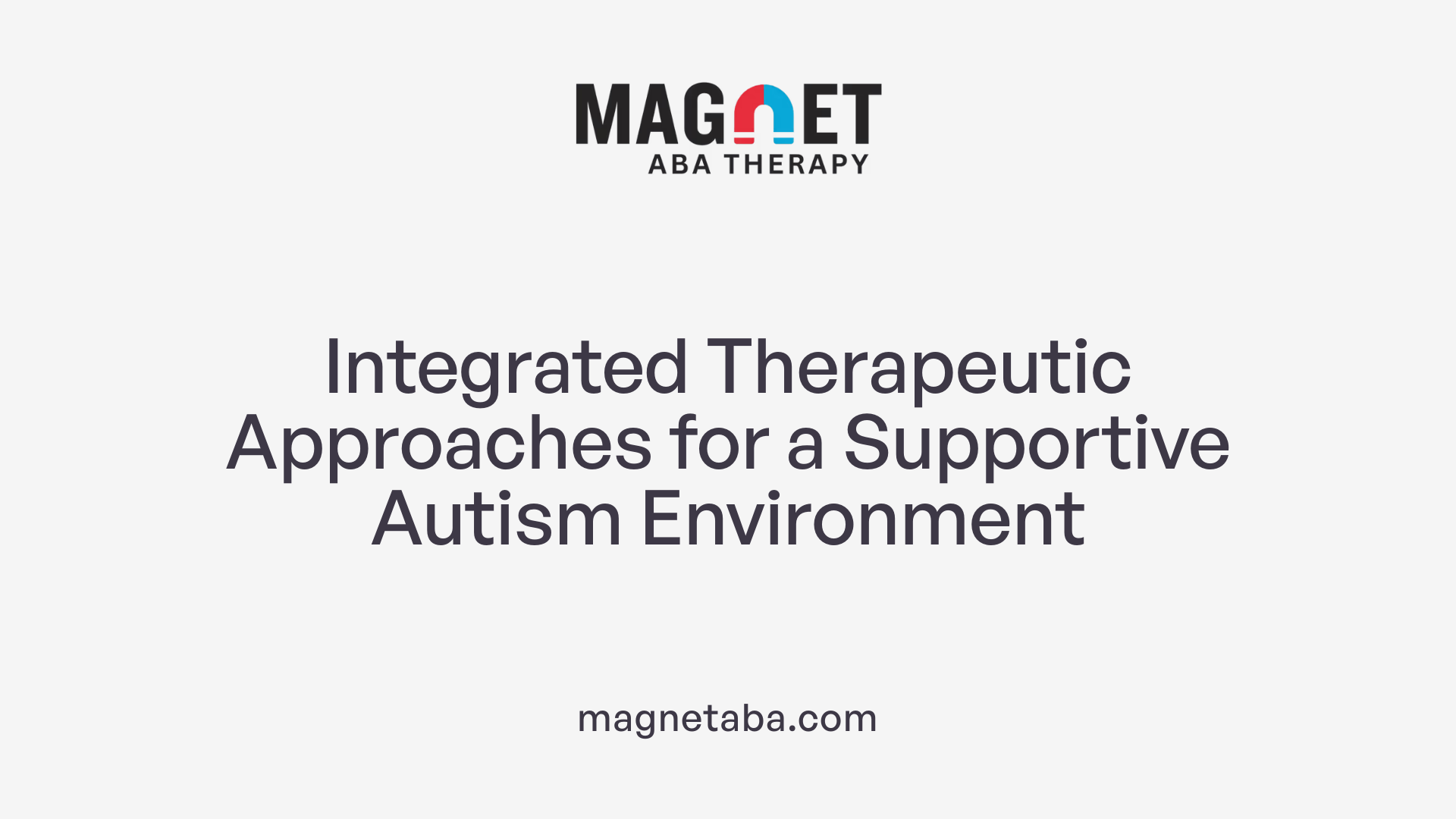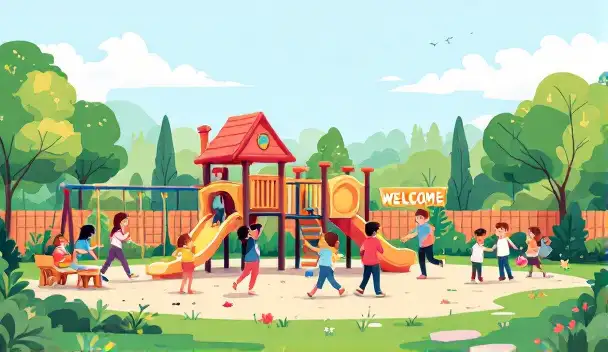Understanding and Supporting Verbal Development with ABA
Supporting children with limited verbal skills, particularly those on the autism spectrum, requires a comprehensive understanding of their unique challenges and tailored intervention strategies. Behavioral interventions, especially Applied Behavior Analysis (ABA), have proven highly effective in fostering communication skills. This article explores various techniques, assessment methods, and supportive tools to enhance communication in these children, emphasizing evidence-based practices and the integration of visual supports and AAC.
Early Intervention and Multidisciplinary Approaches

Why is early intervention crucial for children with autism?
Early intervention makes a significant difference in the developmental trajectory of children with autism. Initiating therapy programs during the critical early years can lead to better social, communication, and behavioral outcomes. This period is vital because the brain is most receptive to learning and change.
How does combining therapies maximize benefits?
A multidisciplinary approach that integrates speech therapy, occupational therapy, and behavioral therapy can produce the best results. Speech therapy helps improve language and communication skills, occupational therapy focuses on daily living skills and sensory processing, while behavioral therapy, such as applied behavior analysis (ABA), helps develop social and adaptive behaviors.
What assessment methods are used to support verbal development in autistic children?
Support for verbal development begins with thorough assessments conducted by a team of professionals. These include speech and language therapists, psychologists, and psychiatrists who evaluate social communication in various settings.
Standardized tools like the Autism Diagnostic Observation Schedule-2 (ADOS-2), Peabody Picture Vocabulary Test, and MacArthur-Bates Communicative Development Inventories are commonly used to measure vocabulary, understanding, and expressive skills. Observations of language in natural contexts help identify functional communication abilities.
For children who are minimally verbal, assessments often incorporate alternative measures, including language samples, imitation tasks, and social behaviors. Evaluating non-verbal cues, such as eye contact, gestures, and body language, is also a vital part of understanding a child's communication profile.
This comprehensive evaluation guides tailored intervention strategies and ensures that therapies address individual needs while considering cultural, gender, and communication preferences.
| Aspect of Assessment | Tools/Methods Used | Purpose/Focus | Notes |
|---|---|---|---|
| Standardized Tests | ADOS-2, Peabody, MacArthur-Bates | Measure language skills | Used for benchmarking and tracking progress |
| Observational Sampling | Natural language use | Capture functional communication | Helps adapt interventions to real-life contexts |
| Alternative Measures | Language samples, imitation tasks | Support minimally verbal children | Necessary when floor effects occur |
| Social and Non-verbal Skills | Non-verbal cues, social behaviors | Assess interaction capabilities | Critical for holistic understanding |
What types of therapies are often integrated?
Early intervention typically combines various approaches:
- Speech and language therapy to boost verbal and non-verbal communication.
- Occupational therapy to address sensory sensitivities and improve independence.
- Behavioral therapy like ABA to reinforce desired social and communication behaviors.
- Developmental approaches, including the Early Start Denver Model (ESDM), utilize play-based activities rooted in ABA to promote language, social, and learning skills.
- Visual supports such as picture schedules and social stories help children understand routines and social interactions.
- Augmentative and Alternative Communication (AAC) tools, including communication devices and sign language, assist children who are non-verbal or minimally verbal.
These combined efforts foster a supportive environment that encourages children to communicate more confidently and develop essential social skills.
Understanding Autism Communication Challenges
What are the common communication challenges faced by children with autism?
Children with autism often encounter difficulties in both verbal and non-verbal ways of communication. Many experience delayed speech development or limited speech altogether, which can make expressing their needs and thoughts challenging. They may also rely heavily on gestures or exhibit repetitive speech patterns such as echolalia, where they echo words or phrases without understanding their meaning.
Interpreting facial expressions, body language, and social cues can be particularly hard for children with autism. They may struggle with understanding sarcasm, idioms, or figurative language, which can lead to misunderstandings in social situations.
Non-verbal communication skills, like making eye contact or using appropriate body gestures, are often affected. This impacts their ability to form social bonds and engage effectively with peers and caregivers.
Furthermore, sensory sensitivities play a significant role. Some children may be overwhelmed by sights, sounds, or textures, which can hinder their ability to focus on communication efforts. Differences in processing language and sensory input can make conventional communication more complex.
To support these children, early intervention strategies are vital. Speech-language therapy, behavioral approaches like ABA, and the use of alternative communication tools such as picture schedules or communication devices can promote better communication skills.
| Challenge Type | Examples | Impact |
|---|---|---|
| Verbal difficulties | Delayed speech, echolalia | Limited expressive language |
| Non-verbal difficulties | Limited eye contact, gestures | Challenges in social interaction |
| Sensory sensitivities | Overwhelm from sensory input | Affects focus and communication engagement |
Overall, understanding these challenges helps caregivers, educators, and therapists develop personalized approaches to foster effective communication in children with autism.
Techniques and Approaches in ABA for Verbal Skills
What effective ABA techniques support the development of verbal skills in children with autism?
Applied Behavior Analysis (ABA) offers several effective strategies for enhancing verbal communication in children with autism. Among these, Discrete Trial Training (DTT) is fundamental. DTT involves breaking down language and communication skills into small, manageable steps, teaching each with clear instructions, repetition, and reinforcement. It provides a structured environment where children can practice sounds, words, and phrases repeatedly, strengthening their learning.
Another powerful technique is pivotal response training (PRT), which focuses on pivotal areas such as motivation and response to cueing. PRT is often conducted in natural settings, allowing children to practice communication skills in everyday contexts, helping skills to generalize.
Visual supports like picture exchange communication systems (PECS), communication boards, and speech-generating devices serve as bridges for children who struggle with verbal expression. These tools help children understand the connection between symbols and their meanings and initiate communication more confidently.
Modeling and echoic training play crucial roles in verbal development. Therapists demonstrate correct pronunciation and speech patterns, encouraging children to imitate sounds, words, or phrases, which is essential for speech acquisition.
Errorless learning combined with reinforcement strategies ensures that children experience success and stay motivated. Prompting assists children in responding correctly initially, and these prompts are gradually faded to promote independent use of communication.
Verbal Behavior Therapy (VBT) targets different language operants—mands, tacts, and intraverbals. It teaches children to request objects or actions, label items, and respond naturally to questions or prompts, fostering spontaneous speech.
Caregivers' training is also critical. When caregivers are equipped with these techniques, they can implement consistent interventions across different settings, which accelerates progress and helps maintain gains.
Overall, these ABA methods work together to reinforce communication, foster spontaneous verbal speech, and support children in using language functionally in their daily lives.
| Technique | Description | Benefits |
|---|---|---|
| Discrete Trial Training (DTT) | Step-by-step teaching with reinforcement | Improves structured skill acquisition |
| Pivotal Response Training (PRT) | Natural environment learning focusing on motivation | Enhances generalization and motivation |
| Visual Supports | Use of pictures, PECS, communication devices | Aids understanding and initiates communication |
| Modeling and Echoic Training | Demonstrating correct speech for imitation | Encourages speech imitation |
| Errorless Learning & Reinforcement | Guided responses with positive feedback | Builds confidence and reduces frustration |
In summary, ABA employs a combination of structured techniques, visual supports, modeling, and reinforcement to support the development of verbal skills. These strategies are tailored to individual needs and are most effective when implemented consistently across environments.
Enhancing Communication Skills through ABA
How does ABA therapy enhance communication skills in children with autism?
Applied Behavior Analysis (ABA) therapy plays a significant role in improving communication abilities in children with autism spectrum disorder (ASD). It does so by systematically teaching both verbal and non-verbal communication skills through a variety of structured techniques.
One of the core methods used in ABA is modeling. Therapists demonstrate appropriate communication behaviors, such as using simple language, making eye contact, and engaging in turn-taking. These models serve as examples for children to imitate, helping them understand how to initiate and maintain interactions.
Reinforcement is vital in ABA. When a child attempts to communicate—whether by using a word, gesture, or other means—positive rewards like praise, tokens, or other motivating stimuli encourage them to repeat and refine these behaviors. Over time, this process helps children develop a richer vocabulary and more effective ways to express their needs and desires.
Structured interventions like discrete trial training (DTT) break down communication skills into smaller, manageable steps. For example, a child might be taught to respond to a question or to say a particular word in response to a prompt. Prompts are gradually faded to promote independent use of communication skills.
Visual supports, including picture exchange communication systems (PECS), are often integrated into ABA sessions. These tools help children who are minimally verbal or non-verbal to communicate their messages effectively.
Another key focus of ABA is developing social communication skills. For instance, children are encouraged to recognize and respond to social cues such as facial expressions and tone of voice. They might also learn to initiate conversations or share interests, which are essential for meaningful social relationships.
Activities such as natural environment training (NET) are conducted in real-life settings where children use communication skills in everyday situations. This promotes functional, generalizable language use that can be transferred beyond therapy sessions.
Overall, ABA adopts an individualized approach, analyzing each child's specific needs and progress. This tailored strategy, combined with consistent practice across various environments, leads to measurable improvements in communication. These enhancements significantly contribute to better social interactions, increased independence, and improved quality of life for children with ASD.
Role of Visual Supports and AAC in Communication
How can visual supports and AAC assist in communication for children with autism?
Children with autism often face challenges in expressive and receptive communication, making it difficult for them to share their needs, thoughts, and emotions. Visual supports and Augmentative and Alternative Communication (AAC) tools serve as vital strategies to bridge this gap.
Visual supports include tools like picture schedules, communication boards, social stories, and visual cues. These resources help children understand routines, social interactions, and expectations by presenting information in a clear, visual manner. For example, a picture schedule can outline daily activities, reducing anxiety and promoting independence.
AAC tools encompass an array of techniques such as communication devices, sign language, picture exchange systems, and speech-generating apps. These tools are especially beneficial for children who are non-verbal or minimally verbal, enabling them to express preferences, needs, or emotions effectively.
Implementing these supports requires careful assessment to tailor them to each child's developmental level and individual preferences. Consistent use across different environments—home, school, therapy—reinforces communication skills. Speech and language therapists often train caregivers and educators in how to model and encourage the use of visual supports and AAC.
The integration of visual supports and AAC not only enhances understanding but also boosts confidence, encourages social interaction, and reduces frustration for children with autism. When these tools are used regularly and appropriately, they facilitate more meaningful participation in daily activities and promote the development of functional communication skills.
Types of visual supports
| Support Type | Description | How It Helps |
|---|---|---|
| Picture Schedules | Visual sequences of daily routines | Builds predictability and independence |
| Communication Boards | Boards with symbols or words for expressing needs | Enhances spontaneous communication |
| Social Stories | Short stories describing social situations | Clarifies social expectations and appropriate responses |
| Visual Cues | Prompts like arrows or gestures | Supports understanding and transitions |
AAC Tools and Resources
| AAC Device Type | Description | Suitable For |
|---|---|---|
| Electronic Communication Devices | Speech-generating devices or apps | Children with severe speech delays |
| Sign Language | Manual gestures representing words or ideas | Children who benefit from manual communication methods |
| Picture Exchange System (PECS) | System where children exchange pictures to communicate | Highly effective for initiating communication |
Training and Consistency
For successful integration, consistent training for caregivers and educators is essential. Regular modeling, encouraging use, and positive reinforcement help children become comfortable and proficient with these supports. Ongoing collaboration among therapists, teachers, and families ensures the supports evolve with the child's growth. Overall, visual supports and AAC are powerful tools that foster independence and improve communication outcomes for children with autism.
Supporting Children with Limited Verbal Skills Using ABA

What strategies and methods can support children with limited verbal skills using ABA?
Supporting children who have limited verbal skills through Applied Behavior Analysis (ABA) involves a mix of specific, targeted approaches. Visual supports like picture schedules, communication boards, and social stories play a vital role in helping children understand routines and social cues. These tools make abstract concepts concrete, fostering independence and reducing anxiety.
Augmentative and Alternative Communication (AAC) devices—such as communication boards, sign language, and picture exchange systems—are essential for children who are non-verbal or minimally verbal. These systems provide alternative ways for children to express their needs, reducing frustration and encouraging social interaction.
Modeling communication through simple language, eye contact, and turn-taking demonstrably shows children appropriate social and verbal behaviors. This modeling, along with caregivers' consistent and empathetic listening, nurtures trust and encourages children to emulate these social cues.
Reinforcement strategies are fundamental, rewarding children for attempts to communicate—whether verbal, gestural, or through AAC tools—to strengthen these behaviors. Prompting and gradually fading cues help children learn to use communication systems independently.
Incorporating play and social activities enhances language development naturally. For example, role-playing and social stories teach children how to interpret social cues and develop conversation skills in enjoyable contexts.
Finally, training caregivers to remain patient and responsive creates a supportive environment that motivates children to communicate more confidently. Combining visual supports, AAC, modeling, reinforcement, and caregiver involvement offers a comprehensive approach to boost communication in children with limited verbal skills.
The Role of Sensory and Social Skills in Communication

How does ABA therapy enhance social skills in children with autism?
Applied Behavior Analysis (ABA) therapy is a well-supported method for helping children with autism develop essential social skills. It focuses on teaching children how to take turns, share, interpret social cues, and form friendships.
ABA employs a variety of structured activities to reach these goals. These include role-playing scenarios that simulate real-life interactions, social stories that illustrate appropriate social behavior, and modeling, where therapists demonstrate desired behaviors.
Reinforcement strategies play a crucial role. Rewards are used to encourage positive social behaviors, making learning engaging and effective. Peer-mediated interventions also introduce children to social interactions within a supportive environment, promoting natural socialization.
Addressing sensory sensitivities is another critical aspect. Sensory integration therapies help children become more receptive to communication by managing sensitivities and processing issues.
Facilitating peer interactions helps children practice their skills in real-world settings, fostering confidence and social competence. Activities like social skills groups, video modeling, and guided interactions with peers help children recognize facial expressions, tone of voice, and other social cues.
Overall, ABA offers a comprehensive framework that not only teaches specific behaviors but also supports emotional bonds and independence. This approach encourages children to connect more fully with those around them and navigate social situations with greater confidence.
How do sensory integration therapies and peer interactions support communication?
Sensory integration therapies are tailored to help children process sensory information more effectively. By reducing sensitivities—such as to noise, light, or touch—they become more open and alert during communication attempts.
Supporting children’s natural curiosity, peer interactions provide opportunities to practice communication in supportive settings. These interactions foster social engagement, patience, and cooperation, essential components for meaningful conversations.
In combination, sensory therapies and peer-based activities help create a foundation where children feel safe, understood, and motivated to communicate.
Integrating Therapies and Creating Supportive Environments
 Combining behavioral, speech, and occupational therapies offers a comprehensive approach to supporting children with autism. Applied Behavior Analysis (ABA) stands out as a highly evidence-supported method for enhancing social and communication skills. It uses structured techniques like discrete trial training and natural environment training to teach appropriate behaviors, including effective communication. These interventions incorporate reinforcement, prompting, and modeling, enabling children to develop both verbal and non-verbal language capabilities.
Combining behavioral, speech, and occupational therapies offers a comprehensive approach to supporting children with autism. Applied Behavior Analysis (ABA) stands out as a highly evidence-supported method for enhancing social and communication skills. It uses structured techniques like discrete trial training and natural environment training to teach appropriate behaviors, including effective communication. These interventions incorporate reinforcement, prompting, and modeling, enabling children to develop both verbal and non-verbal language capabilities.
In tandem with ABA, speech and language therapy focus on improving understanding and expressive language, often incorporating alternative communication tools such as sign language, picture exchange systems, or electronic devices. Occupational therapy complements these efforts by addressing daily functional skills and sensory sensitivities, making children more receptive to communication.
Creating structured routines is vital. Consistent schedules and visual supports like picture schedules or social stories help children understand daily routines and social expectations. Visual tools serve as visual cues for routines and social interactions, easing anxiety and encouraging participation.
Facilitating peer interactions in supportive environments fosters social communication skills. Activities like social skills groups, role-playing, and modeling teach children to interpret social cues, such as facial expressions and tone of voice. These interactions help form friendships and improve social confidence.
Sensory integration therapy, often part of occupational therapy, addresses sensory sensitivities that might hinder communication. By calming or stimulating the senses appropriately, children become more open to engaging with others.
Involving caregivers through empathetic listening and consistent interaction builds trust and encourages children to express themselves more freely. Using children’s interests as a foundation for communication helps motivate engagement and makes learning more functional.
Children benefit most when all these elements work together in a harmonious, structured setting. This integrated approach not only improves communication abilities but also promotes independence and social participation.
| Therapy Type | Focus Area | Techniques and Tools | Expected Outcomes |
|---|---|---|---|
| ABA | Behavior & Social Skills | Discrete trial training, modeling, visual supports | Increased speech, understanding social cues, initiating social interactions |
| Speech & Language | Communication skills | Sign language, AAC devices, social stories | Better expressive and receptive language |
| Occupational Therapy | Daily functioning & Sensory processing | Sensory integration, routine-based activities | Greater receptivity to communication and daily independence |
| Structured Environment | Routine & Social Skills | Visual schedules, peer interactions | Reduced anxiety, improved social confidence |
The Impact of Medications and Additional Support Strategies
Are there medications that treat core symptoms of ASD?
Currently, no medications are approved specifically for curing or directly treating the core symptoms of Autism Spectrum Disorder (ASD), such as social communication challenges and repetitive behaviors. However, certain medications can be beneficial in managing associated co-occurring symptoms.
These symptoms include high energy levels, difficulty focusing, anxiety, depression, seizures, sleep disturbances, and gastrointestinal issues. For example, medications like antianxiety drugs or antidepressants may help with anxiety and mood regulation, while seizure medications are prescribed if neurological issues are present. Sleep aids can address sleep problems, and stomach-related medications can help alleviate gastrointestinal discomfort.
What are some alternative and complementary treatments for autism?
Beyond traditional therapies, many families explore alternative and complementary approaches to support their children’s development. These include special diets, herbal supplements, chiropractic care, arts therapies, animal-assisted therapy, and mindfulness practices. While these methods can sometimes provide additional benefits, it’s important that they are discussed with healthcare providers to ensure safety and compatibility with established treatments.
Using these strategies alongside evidence-based therapies like speech, occupational, and behavioral therapy can create a comprehensive support system tailored to the child's needs. This integrative approach helps improve overall well-being and enhances skills in communication, social interaction, and daily functioning.
Combining strategies for optimal support
A multidisciplinary approach often yields the best outcomes. For instance, incorporating behavioral interventions like Applied Behavior Analysis (ABA), speech therapy, occupational therapy, sensory integration, and social skills training addresses various developmental areas. When medication is used to manage specific symptoms, it supports participation in these therapies, making progress more attainable.
Working closely with healthcare professionals enables families to develop personalized treatment plans that consider all aspects of the child's health and development. This holistic strategy ensures children with ASD receive the necessary support to thrive across different environments and social settings.
| Support Type | Focus Area | Additional Notes |
|---|---|---|
| Medications | Manage co-occurring symptoms | Includes anxiety, seizures, sleep, gastrointestinal issues |
| Alternative Treatments | Supplement standard therapies | Diets, herbal supplements, mindfulness, animal therapy |
| Behavioral Therapies | Enhance communication, social skills | ABA, social stories, role-playing, modeling |
| Sensory Integration Therapy | Address sensory sensitivities | Helps children become more receptive to communication stimuli |
| Peer and Social Skills Support | Improve social interactions | Group therapies, social skills training, natural environment teaching |
By combining these various methods, families can create a supportive environment that fosters growth, communication, and overall development for children with ASD.
Empowering Communication and Social Integration
Supporting children with limited verbal skills through ABA involves a multidimensional approach that combines assessment, evidence-based interventions, visual supports, and family involvement. Tailoring strategies to each child's unique needs, fostering natural communication opportunities, and integrating social skills training are key to promoting independence and meaningful social interactions. Early intervention and a consistent, supportive environment lay the foundation for improved communication, social bonding, and overall growth, enabling children with autism to reach their full potential.
References
- How to Enhance Communication Skills in Autism Children
- Treatment and Intervention for Autism Spectrum Disorder
- ABA Speech Therapy Techniques for Autism: Effective ...
- How ABA Therapy Helps Improve Social Skills in Children
- Teaching nonverbal autistic children to talk
- How ABA Works on Non-Verbal Children
- Making Progress with Nonverbal Autism Through Private ...
- Strategies To Encourage Communication With Your Child












